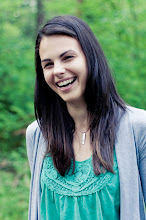
 A knock at the door and guess who it was? Santa Claus entered the room and all the children surrounded him with wonderful stories. One of the things that they told Santa was that they decorated the daycare :) Santa sat down on the cozy red chair and told us that there are three things that we really need - LOVE - HAPPINESS and GOOD HEALTH.
A knock at the door and guess who it was? Santa Claus entered the room and all the children surrounded him with wonderful stories. One of the things that they told Santa was that they decorated the daycare :) Santa sat down on the cozy red chair and told us that there are three things that we really need - LOVE - HAPPINESS and GOOD HEALTH.  1. Story of the magic watch - How can Santa deliver presents all over the world? Easy... he puts magic snow from the North Pole on his magic watch and it freezes up and time stops.
1. Story of the magic watch - How can Santa deliver presents all over the world? Easy... he puts magic snow from the North Pole on his magic watch and it freezes up and time stops.
Merry Christmas

 A knock at the door and guess who it was? Santa Claus entered the room and all the children surrounded him with wonderful stories. One of the things that they told Santa was that they decorated the daycare :) Santa sat down on the cozy red chair and told us that there are three things that we really need - LOVE - HAPPINESS and GOOD HEALTH.
A knock at the door and guess who it was? Santa Claus entered the room and all the children surrounded him with wonderful stories. One of the things that they told Santa was that they decorated the daycare :) Santa sat down on the cozy red chair and told us that there are three things that we really need - LOVE - HAPPINESS and GOOD HEALTH.  1. Story of the magic watch - How can Santa deliver presents all over the world? Easy... he puts magic snow from the North Pole on his magic watch and it freezes up and time stops.
1. Story of the magic watch - How can Santa deliver presents all over the world? Easy... he puts magic snow from the North Pole on his magic watch and it freezes up and time stops. 






































